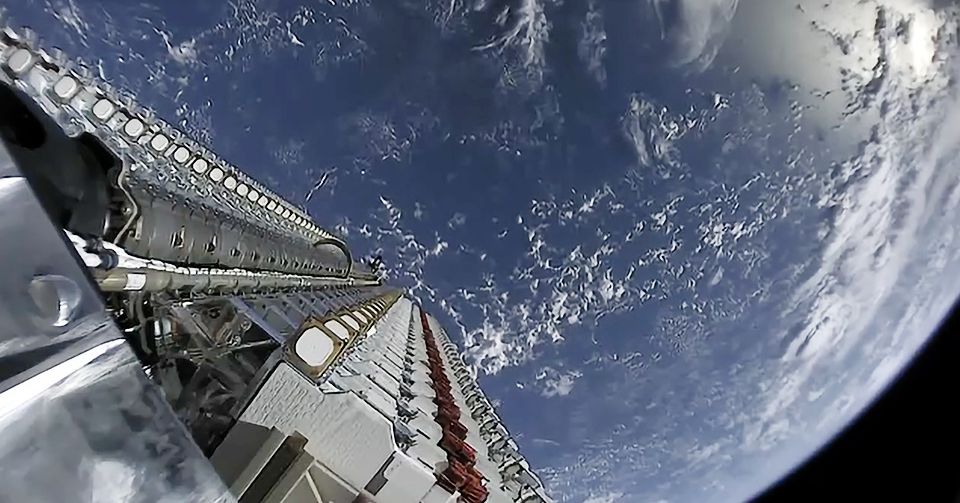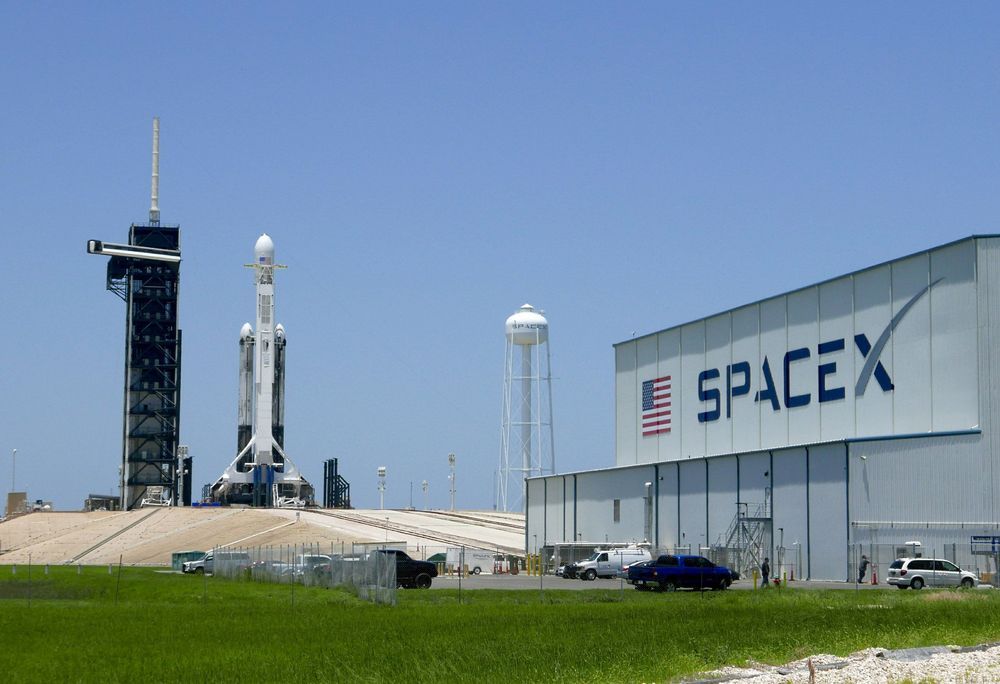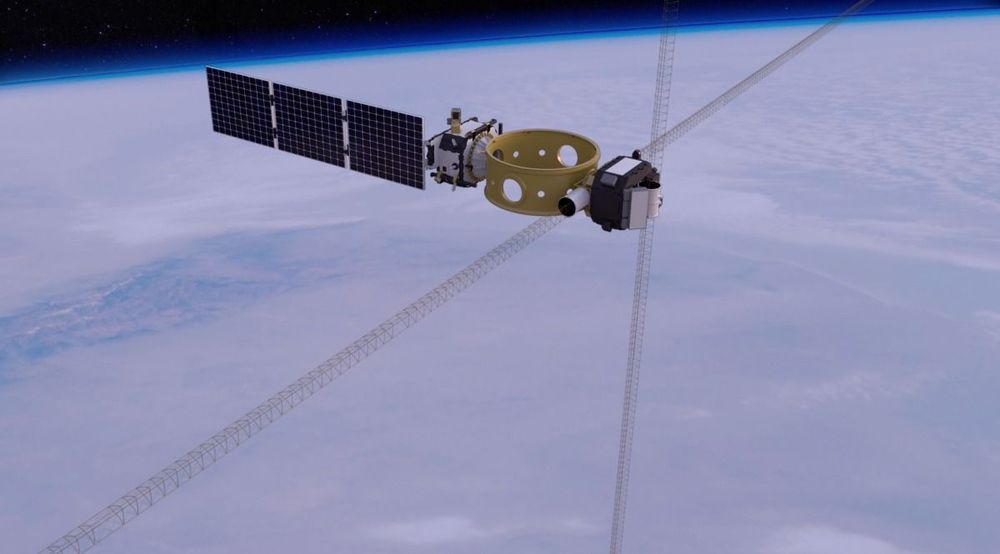Archive for the ‘satellites’ category: Page 148
Jun 27, 2019
This Startup Wants To Use A Hypersonic Catapult To Throw Satellites Directly Into Space By 2022
Posted by Genevieve Klien in categories: energy, military, satellites
A secretive startup has been awarded a launch contract for the U.S. military using a rather novel launch system – based on kinetic energy technology that would essentially shoot satellites directly into space using a hypersonic vehicle.
Last week on Wednesday, June 19, California-based company SpinLaunch announced they had secured a launch contract with the U.S. Department of Defense (DOD). They didn’t release any further details, other than noting it was a “responsive launch prototype contract… for kinetic energy-based launch services.”
Jun 26, 2019
Elon Musk says he knows why Falcon Heavy’s core booster missed its landing
Posted by Genevieve Klien in categories: Elon Musk, satellites
SpaceX launched its Falcon Heavy rocket in the early hours of Tuesday morning, delivering 24 satellites into orbit and making many of its clients very happy in the process. The company nailed the landing of both side boosters, but the center core booster narrowly missed its landing and splashed down in the ocean instead.
In the hours following the launch, SpaceX boss Elon Musk weighed in on the unfortunate fate of the core booster, offering a bit of an explanation as to why it missed its mark.
Jun 26, 2019
International Space Station Will Test 3D-Printed Materials In Orbit
Posted by Klaus Baldauf in categories: 3D printing, satellites, surveillance
New 3D-printed materials are going to space thanks to a recently funded partnership between Israel’s NanoDimension and Florida’s Harris Corp.
The companies plan to create new materials to reduce the manufacturing of small satellites, an exceedingly popular market right now for applications ranging from weather observations to remote surveillance.
They aim to fly their materials on an external platform of the International Space Station for a year. The goal is to better understand how 3D-printed components (such as circuits and materials) withstand the space environment, which includes extreme temperature swings and high radiation. The launch date of the project was not disclosed.
Jun 25, 2019
NASA’s About to Send an Atomic Clock Into Orbit, And It’ll Revolutionise Space Travel
Posted by Genevieve Klien in category: satellites
On 24 June 2019, NASA is sending an atomic clock into space. Not just any old atomic clock, either. It’s up to 50 times more accurate than the atomic clocks aboard GPS satellites, its precision only changing by one second every 10 million years.
It’s only the size of a toaster, yet it could revolutionise deep-space travel.
It’s called the Deep Space Atomic Clock, and the next year will be crucial to its development, with NASA monitoring its performance as it orbits Earth at an altitude of 720 kilometres (447 miles) — nearly twice the distance from Earth as the International Space Station. It’ll be launched aboard SpaceX’s Falcon Heavy rocket.
Jun 25, 2019
Russian Volcano Erupts for the First Time Since 1924 And the Images From Space Are Stunning
Posted by Genevieve Klien in category: satellites
Jun 25, 2019
SpaceX launches hefty rocket with 24 satellites
Posted by Genevieve Klien in categories: energy, military, satellites
CAPE CANAVERAL, Fla. (AP) — SpaceX launched its heftiest rocket with 24 research satellites Tuesday, a middle-of-the-night rideshare featuring a deep space atomic clock, solar sail, a clean and green rocket fuel testbed, and even human ashes.
It was the third flight of a Falcon Heavy rocket, but the first ordered up by the military.
The Defense Department mission, dubbed STP-2 for Space Test Program, is expected to provide data to certify the Falcon Heavy — and reused boosters — for future national security launches. It marked the military’s first ride on a recycled rocket.
Jun 23, 2019
SpaceX Is on a Hiring Spree for Its Starlink Global Internet Project
Posted by Genevieve Klien in categories: internet, satellites
After a string of delays, SpaceX’s Starlink project was finally launched last month. The ambitious aim of the project is to create a “global broadband” system by launching a network of satellites which will eventually be able to give fast internet access from anywhere, even remote locations which currently can’t get broadband internet access.
The project is moving ahead at a considerable pace, with aims to have the first internet access provided by 2021. It may take until November 2027 to get all of the satellites required for the global network launched and into place, but a basic version of the service may be possible with around 1,000 satellites. Within the U.S., some version of the service could be available with just 400 satellites in place.
Naturally, a project of this magnitude requires a huge logistical undertaking and a lot of knowledge from a lot of different sectors. And you can see the takeoff of interest in the Starlink project within SpaceX by analyzing the company’s hiring practices.
Jun 18, 2019
Satellites show 740 square kilometres of rainforest cleared in 30 days
Posted by Fyodor Rouge in category: satellites
The bulldozing of the Amazon rainforest has risen sharply since Brazilian President Jair Bolsonaro came to power.

















